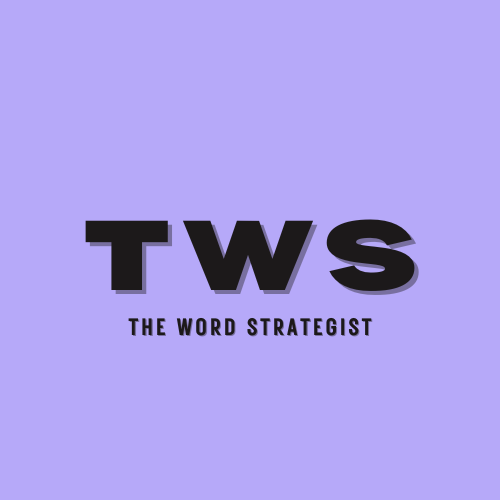We’ve all heard the adage that content is king — or maybe that’s just something content writers hear.
Content is at the center of every marketing strategy. But how much content does a company need to create on a daily/weekly/monthly basis? If content is king, are we talking a robust Henry VIII or a lean Charles III?
The answer, of course, is it depends on your goals, resources, industry, and audience. Whether you’re a small business or an enterprise, finding the right balance between quality and quantity is essential to drive results without overwhelming your team or diluting your message.
So, let’s break down how much content your company should generate each month and the factors to consider when crafting your content strategy.
Understand your goals
Your business is multidimensional. Your content strategy should reflect that. You might have multiple products and you definitely have prospects spanning the entire sales funnel.
You might need content for novices and experts, end-users and decision-makers. Do you want to inform or generate leads?
Odds are, you need all of the above. What types of content and copy help with what goals?
- Brand Awareness — Prioritize high-volume, shareable content like social media posts, blogs, and short videos
- Lead Generation — Focus on in-depth, informative gated content such as ebooks, whitepapers, and webinars
- Customer Retention — Produce value-driven content like newsletters, tutorials, and product updates
- SEO — Aim for consistent blog posts and evergreen content to improve rankings and organic traffic
Prioritizing your goals will help determine both the type and amount of content you need to produce.
Content production benchmarks
Every small or medium-sized (SMB) business owner that I’ve ever known has at one point or another compared themselves to Sisyphus. They move the boulder up the hill, only to be knocked down by much larger competitors.
Enterprise organizations have larger marketing teams, bigger budgets, better brand awareness, and far better Google rankings.
Still, in my dream world, SMB marketers would mimic content cadence (not the content itself) from enterprise competitors, but that’s generally not possible, at least not without compromising on quality. It’s far better to produce a lower volume of high-quality content and copy than try to compete on the bigger stage, only to be pushed down the hill.
Besides, it’s always worth reminding yourself that if you’re like most SMBs, you don’t have the resources to service an enterprise-sized customer base.
Company size isn’t the only factor affecting your ideal content cadence. Each and every product you offer deserves its own content and copy, especially if you are promoting one or more.
You should also create content for each phase of the buyer’s journey. Top of the funnel (TOFU) content is for brand awareness.
Middle of the funnel (MOFU) content should offer subtle reassurance that your company is the right one.
Bottom of the funnel (BOFU) content should be designed to guide buyers to pull the (metaphorical) trigger.
Small businesses
Have you ever gone to a concert or ballgame, only to find your view completely obstructed by the taller person in front of you? It’s frustrating, for sure. Unless moving is an option, the only way around the taller person is either to strain your neck or get creative.
Small businesses are never going to beat out enterprise organizations; they have fewer followers and fewer resources for A/B testing to figure out what works. Small businesses need to do more with less. They need to get creative.
Large corporations create a lot of content. Why? They have a huge and broad customer base. While your business demographic might be working professionals aged 18-34, your larger competitors typically need to reach a much wider audience. In other words, appeal to your narrower buyer persona, and you shouldn’t have to create as much content.
- Blog posts — 2-8 per month (1,000–3,000 words each). Blog posts serve many purposes; they improve SEO, inform, engage, and even generate leads. Few do all of that, but most should accomplish at least two of those goals. SEO blog posts should have 2,000-3,000 words.
- Emails — 4-10 per month (newsletters, promotions, and updates).
- Social media posts — 20-60 posts across 2-4 platforms.
- White papers/eBooks/webinars — 1-2 per quarter.
If your small business has more than one product, you should adjust your blogging, email, and social media campaigns accordingly. But I’m not implying you should double up on your content creation.
- Do you have one main product with add-ons or supporting products — Dedicate one blog post per month to each supplemental product or service.
- Or, do multiple product offerings carry equal weight? — Increase overall product cadence. About half of your content should be general, listing all products, and half specific.
- Do you run individual product promotions? — At least one blog post and most of your email and social media posts should be for that promotion.
Mid-Sized companies
Mid-sized organizations are in a particular tough spot. A lot are competing on the same stage as some of their bigger competitors. I wrote for one SaaS company that had just 500 employees, but their client base included a significant portion of the Fortune 500.
How did they compete? With a very deliberate content strategy. Each piece of content had to have a specific goal. There was content for SEO and some for awareness. Some had to convert to leads and some, contacts.
The company had a few different products. While almost all were add-ons to its primary product, a couple could be sold individually, so its content strategy had to take them into account.
My advice for mid-sized organizations is to post as much quality content as possible.
- Blogs — 4-8 per month.
- Emails — 8-15 per month.
- Social media posts — 50-100 posts across multiple platforms.
- White papers/eBooks/webinars — 1-2 per month.
Enterprise organizations
Enterprise organizations generate a lot of content. They need to. Most have several products and multiple buyer personas.
A typical enterprise organization produces:
- Blogs — 10-30+ per month.
- Emails — 10-50 per month.
- Social Media Posts — 100-500+ posts, often including paid ads.
- White papers/eBooks — 1–5 per month.
- Other Content — Add webinars, video scripts, product documentation, and press releases at least once a week.
Focus on quality over quantity
While enterprises have the resources to scale content production significantly, smaller companies can still compete by prioritizing quality and targeting specific niches.
More content isn’t always better. A poorly written blog or irrelevant social post can harm your brand’s credibility. Focus on:
- Audience needs — Create content that solves problems, answers questions, and provides value.
- Consistency — Publish on a regular schedule to maintain visibility and build trust.
- Optimization — Ensure every piece is SEO-friendly and optimized for your audience’s preferred platforms.
Repurpose content
If your team has limited bandwidth, maximize your efforts by repurposing your most successful content. For example:
- Turn a popular blog post into a video script, infographic, and social media posts.
- Use snippets from a webinar for email campaigns.
- Transform customer FAQs into a series of blog posts or tutorials.
You can even directly reuse effective content.
Monitor and adjust
Content creation isn’t a set-it-and-forget-it strategy. Use analytics to track performance and refine your approach:
- Engagement metrics — Monitor likes, shares, and comments.
- Traffic and conversion — Track how much traffic your content drives and how well it accomplishes its goals.
If certain types of content consistently outperform others, allocate more resources to those areas.
Balance resources and ROI
It’s okay if you can’t match the output of your much larger competitors. You probably don’t even want to. Instead, focus on creating impactful content that aligns with your budget and resources. Even a single, well-targeted blog post can generate significant results if it addresses a key audience pain point.
The right amount of content for your company depends on your goals, audience, and resources. Small businesses may focus on a few high-quality pieces per month, while enterprises might produce hundreds of assets across multiple channels. Regardless of your size, prioritize quality, consistency, and relevance to create a winning content strategy.
Still unsure how much content your company should produce? Let’s talk! Reach out to discuss your content goals and how I can help you craft a strategy that fits your business.
As Henry VIII proved, robust isn’t necessarily better than lean.

I have more than 15 years of experience elevating products and brands through world-class copy and SEO content


